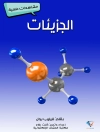There have been remarkable advances towards discovering agents that exhibit selectivity and sequence-specificity for DNA, as well as understanding the interactions that underlie its propensity to bind molecules. This progress has important applications in many areas of biotechnology and medicine, notably in cancer treatment as well as in future gene targeting therapies.
The editor and contributing authors are leaders in their fields and provide useful perspectives from diverse and interdisciplinary backgrounds on the current status of this broad area. The role played by chemistry is a unifying theme. Early chapters cover methodologies to evaluate DNA-interactive agents and then the book provides examples of DNA-interactive molecules and technologies in development as therapeutic agents. DNA-binding metal complexes, peptide and polyamide–DNA interactions, and gene targeting tools are some of the most compelling topics treated in depth.
This book will be a valuable resource for postgraduate students and researchers in chemical biology, biochemistry, structural biology and medicinal fields. It will also be of interest to supramolecular chemists and biophysicists.
Tabella dei contenuti
DNA Recognition by Parallel Triplex Formation; Interfacial Inhibitors; Slow DNA Binding; Thermal Denaturation of Drug-DNA Complexes; Computer Simulations of Drug-DNA Interactions: A Personal Journey; Binding of Small Molecules to Trinucleotide DNA Repeats Associated with Neurodegenerative Diseases; Parsing the Enthalpy-Entropy Compensation Phenomenon of General DNA-Ligand Interactions by a ‘Gradient Determinant’ Approach; Structural Studies of DNA-binding Metal Complexes of Therapeutic Importance; Therapeutic Potential of DNA Gene Targeting using Peptide Nucleic Acid (PNA); Sequence-selective Interactions of Actinomycin D with DNA: Discovery of a Thermodynamic Switch; Molecular Modelling Approaches for Assessing Quadruplex-Small Molecule Interactions; Molecular Recognition of DNA by Py-Im Polyamides: From Discovery to Oncology; Synthetic Peptides for DNA Recognition Inspired by Transcription Factors; Targeting DNA Mismatches with Coordination Complexes; CRISPR Highlights and Transition of Cas9 into a Genome Editing Tool












